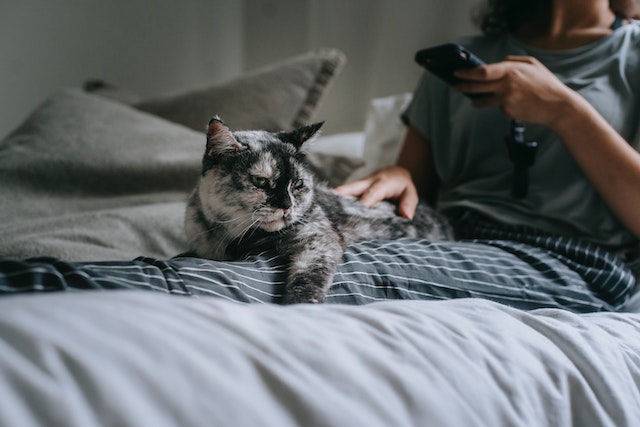Cats purr for a variety of reasons. One of the most common reasons is to signal contentment or pleasure. Cats often purr when petted or held, indicating that they are relaxed and happy.
Cats also purr as a self-soothing mechanism. They may purr when they are in pain or feeling stressed, as the vibrations of the purr can have a calming effect on the cat. Purring may also help cats to heal from injuries, as the vibrations can help to reduce inflammation and promote bone growth.
Additionally, cats may purr to communicate with their owners or other cats. They may use purring as a way to signal that they want attention or affection or as a way to greet other cats.
Some cats also purr when they are in a deep sleep. It is a sign of relaxation.
Not all cats purr, and some cats only purr under certain circumstances, while other cats purr frequently.
It is also believed that the vibrations produced by a cat’s purring can help to stimulate the release of endorphins, which are natural painkillers produced by the body. This is why many cats will purr when injured or in pain, as the vibrations may help reduce their discomfort and promote healing.
Additionally, the vibrations produced by a cat’s purring can also have a hypnotic effect, which can help cats to relax and fall asleep. This is why many cats will purr while sleeping, as the vibrations may help promote more profound and restful sleep.
Cats are not the only ones who purr; other animals, such as raccoons, squirrels and even some species of bats, can also purr. But cats are known to have the most complex purring mechanism with different frequency ranges.
It is also interesting to note that cats have a unique ability to control the frequency and amplitude of their purring, which allows them to communicate different messages to other cats and humans. For example, a cat may purr at a low frequency when feeling relaxed and content, while it may purr at a higher frequency when in pain or feeling stressed.
In conclusion, cats purr for various reasons, and it can be a sign of contentment, self-soothing, communication, and even a healing process. Understanding cats’ behaviour can help owners better understand and care for their feline companions.
